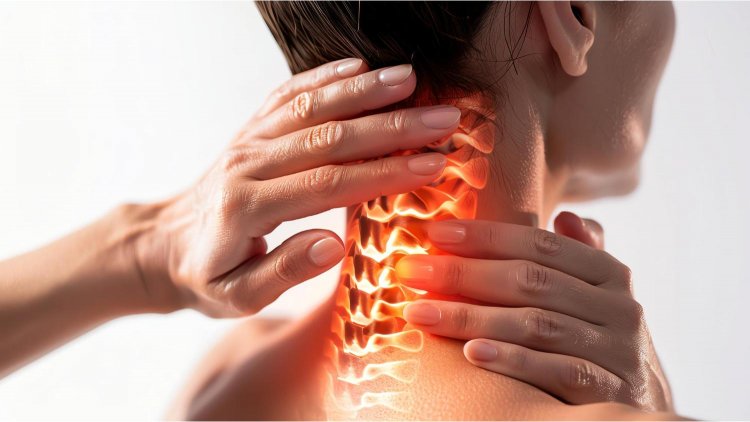Revolutionizing Relief: The New Frontier in Pain Management
Pain management is undergoing a profound transformation, moving beyond the traditional reliance on prescription medications to a more holistic and innovative approach. As chronic pain affects millions of individuals worldwide, healthcare providers and researchers are continuously seeking new methods to alleviate suffering and improve quality of life. This article delves into the cutting-edge innovations in pain management, offering a comprehensive overview of approaches that transcend conventional drug treatments.


The Rise of Non-Pharmacological Therapies
Neuromodulation Techniques
Neuromodulation represents a groundbreaking frontier in pain management. This approach involves modifying nerve activity through targeted interventions. Two prominent methods in this category are spinal cord stimulation (SCS) and peripheral nerve stimulation (PNS).
- Spinal Cord Stimulation (SCS): SCS involves implanting a small device near the spinal cord that emits electrical impulses. These impulses interfere with pain signals before they reach the brain. This technique has shown promising results in treating conditions like failed back surgery syndrome and complex regional pain syndrome.
- Peripheral Nerve Stimulation (PNS): PNS targets specific nerves outside the spinal cord. A small pulse generator is implanted near the nerve, sending electrical pulses that disrupt pain signals. PNS is often used for localized pain and can be less invasive than SCS.
Bioelectronic Medicine
Bioelectronic medicine is an emerging field that combines biology and electronics to treat pain. This approach utilizes small, implanted devices to modulate nerve activity. By influencing the electrical impulses that travel through nerves, bioelectronic medicine aims to reduce pain without the need for drugs.
- Vagus Nerve Stimulation (VNS): Originally developed for epilepsy and depression, VNS has been explored for chronic pain management. The vagus nerve, which runs from the brainstem to the abdomen, is stimulated with electrical pulses. Research is ongoing, but early studies suggest VNS may help with conditions like migraines and fibromyalgia.
- Transcranial Magnetic Stimulation (TMS): TMS involves using magnetic fields to stimulate nerve cells in the brain. This technique is primarily used for depression but has shown potential for pain management. By modulating brain activity, TMS can alter the way pain is processed, potentially providing relief for chronic pain sufferers.
Integrative and Complementary Therapies
Mind-Body Techniques
The connection between mind and body is increasingly recognized in pain management. Techniques that harness this connection offer alternative ways to manage pain.
- Mindfulness Meditation: Mindfulness meditation encourages individuals to focus on the present moment and accept their experiences without judgment. Research indicates that regular practice can reduce the perception of pain and improve pain-related outcomes in conditions such as arthritis and chronic back pain.
- Cognitive Behavioral Therapy (CBT): CBT helps individuals change negative thought patterns that can exacerbate pain. By teaching coping strategies and altering perceptions of pain, CBT can significantly improve quality of life for chronic pain patients.
Physical and Manual Therapies
Physical and manual therapies continue to evolve, offering new approaches to pain management.
- Acupuncture: This traditional Chinese medicine technique involves inserting thin needles into specific points on the body. Acupuncture has gained recognition for its ability to manage various types of pain, including osteoarthritis and migraines. Modern research supports its efficacy, although mechanisms are still being studied.
- Chiropractic Care: Chiropractors use spinal manipulation and other techniques to alleviate pain and improve function. This approach is particularly effective for musculoskeletal pain, such as back pain and neck pain. Emerging research supports chiropractic care as a viable alternative to medication for certain conditions.
Advances in Pain Research
Genetic and Personalized Medicine
Recent advances in genetics are paving the way for more personalized approaches to pain management. Understanding an individual's genetic makeup can help tailor treatments to their specific needs.
- Pharmacogenomics: This field studies how genes affect an individual's response to drugs. By identifying genetic markers, healthcare providers can prescribe medications that are more likely to be effective and have fewer side effects. This approach minimizes the trial-and-error process often associated with pain medication.
- Genetic Risk Profiling: Genetic risk profiling assesses an individual's susceptibility to chronic pain conditions. By identifying those at higher risk, preventive strategies and early interventions can be implemented, potentially reducing the incidence and severity of chronic pain.
Regenerative Medicine
Regenerative medicine focuses on repairing or replacing damaged tissues and organs. This field offers promising options for pain management by addressing the root causes of pain.
- Stem Cell Therapy: Stem cells have the potential to regenerate damaged tissues and reduce inflammation. In pain management, stem cell therapy is being explored for conditions such as osteoarthritis and disc degeneration. Early studies suggest that stem cells may improve function and alleviate pain by promoting tissue repair.
- Platelet-Rich Plasma (PRP) Therapy: PRP therapy involves injecting a concentration of platelets from the patient's own blood into an injured area. The growth factors in platelets stimulate healing and reduce inflammation. PRP therapy is used for musculoskeletal pain, including tendon injuries and joint arthritis.
Technological Innovations
Wearable Pain Management Devices
Wearable technology is transforming pain management by providing continuous monitoring and targeted interventions.
- Smart Pain Management Devices: Wearable devices equipped with sensors can track pain levels and physiological responses in real-time. These devices can provide feedback and adjustments to treatment plans based on the data collected. Some advanced wearables also integrate with mobile apps to offer personalized pain management strategies.
- Transcutaneous Electrical Nerve Stimulation (TENS) Units: TENS units are portable devices that deliver electrical impulses through electrodes placed on the skin. These impulses can help reduce pain by interfering with pain signals. Modern TENS units are more sophisticated, offering programmable settings and Bluetooth connectivity for remote control and monitoring.
Virtual Reality (VR) for Pain Management
Virtual reality is an exciting innovation in pain management, offering immersive experiences that can distract patients from pain.
- Pain Distraction Therapy: VR can transport patients to calming or engaging virtual environments, providing a distraction from pain. Studies have shown that VR can reduce pain perception and anxiety during medical procedures, making it a valuable tool in both acute and chronic pain management.
- VR-Based Rehabilitation: In addition to pain distraction, VR is used for rehabilitation and physical therapy. VR-based exercises can motivate patients to engage in therapeutic activities and track their progress, improving outcomes for conditions such as post-surgical recovery and stroke rehabilitation.
Breaking Barriers: The Future of Pain Relief
Pain management is rapidly transforming with the integration of innovative approaches that move beyond traditional prescription medications. These advancements are reshaping how chronic pain is understood and treated, offering hope and new possibilities for millions suffering from various pain conditions. From neuromodulation to wearable technology, the latest developments in pain management not only aim to alleviate pain but also to enhance overall well-being.
Expanding Horizons with Neuromodulation
Neuromodulation continues to make significant strides in pain management. By altering nerve activity through targeted electrical stimulation, these techniques offer promising alternatives to conventional medications.
- Spinal Cord Stimulation (SCS): This technique has evolved with improved technology, offering more precise control over pain relief. Advanced SCS systems now feature rechargeable batteries and adaptive stimulation capabilities, which can adjust settings based on real-time feedback from the patient.
- Peripheral Nerve Stimulation (PNS): PNS devices are becoming increasingly sophisticated, with advancements in miniaturization allowing for less invasive procedures. Newer models offer longer battery life and enhanced programmability, making them more effective for managing localized pain.
The Role of Bioelectronic Medicine
Bioelectronic medicine represents an exciting intersection of electronics and biology, offering non-drug-based solutions for pain management.
- Vagus Nerve Stimulation (VNS): Research into VNS for pain management is expanding, with studies investigating its effects on various pain conditions. Innovations in VNS technology include more compact and patient-friendly devices, as well as improved stimulation parameters to maximize therapeutic benefits.
- Transcranial Magnetic Stimulation (TMS): TMS is gaining traction as a non-invasive method to modulate brain activity. Recent advancements include high-frequency TMS protocols and combined therapies that enhance its efficacy in treating chronic pain conditions.
Embracing Mind-Body Interventions
The integration of mind-body techniques into pain management strategies highlights the importance of psychological and emotional factors in pain perception.
- Mindfulness Meditation: Modern applications of mindfulness include digital platforms and apps that provide guided meditation and pain management tools. These resources make mindfulness more accessible and customizable to individual needs.
- Cognitive Behavioral Therapy (CBT): Online CBT programs and virtual therapy sessions are expanding access to this valuable treatment. These platforms offer structured, evidence-based approaches for managing chronic pain, making it easier for patients to engage in therapy from home.
Evolving Physical and Manual Therapies
Physical and manual therapies are continuously evolving to incorporate new techniques and technologies.
- Acupuncture: Innovations in acupuncture include advanced needle technologies and the use of electroacupuncture, which combines traditional needle insertion with electrical stimulation for enhanced pain relief.
- Chiropractic Care: Chiropractors are integrating new diagnostic tools and treatment modalities, such as ultrasound imaging and advanced spinal manipulation techniques, to provide more precise and effective care.
Advancements in Pain Research
The field of pain research is making significant strides, particularly in the areas of genetics and regenerative medicine.
- Pharmacogenomics: The development of genetic tests that predict responses to pain medications is becoming more refined. Personalized medication plans based on genetic profiles can optimize treatment outcomes and minimize adverse effects.
- Regenerative Medicine: Ongoing research in stem cell therapy and PRP therapy is yielding promising results. Innovations in these areas include improved cell delivery methods and combination therapies that enhance tissue regeneration and pain relief.
Technological Innovations in Pain Management
Technology continues to drive advancements in pain management, offering new tools and devices for patients and healthcare providers.
- Wearable Pain Management Devices: Innovations in wearable technology include smart devices that track pain levels and physiological data with greater accuracy. These devices provide real-time feedback and adjust treatments based on individual needs.
- Virtual Reality (VR) for Pain Management: VR technology is becoming more sophisticated, with applications ranging from immersive pain distraction to interactive rehabilitation programs. Advances in VR hardware and software are making these tools more effective and accessible.
The ongoing evolution in pain management reflects a shift towards more personalized, effective, and comprehensive approaches. By embracing new technologies and integrating a range of therapeutic modalities, the field is making significant strides in improving the lives of those affected by chronic pain. As research continues and innovations emerge, the future of pain management holds the promise of more tailored and holistic solutions.
Disclaimer: The information provided in this article is for educational purposes only and should not be considered medical advice. If you have any health concerns or are experiencing symptoms, it is important to consult with a healthcare professional, such as a doctor or clinic, for proper diagnosis and treatment. Always seek the advice of your doctor or other qualified health provider with any questions you may have regarding a medical condition. Do not disregard professional medical advice or delay in seeking it because of something you have read in this article.
What's Your Reaction?





















